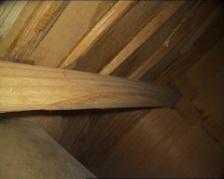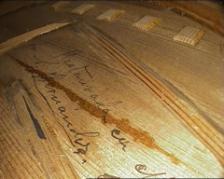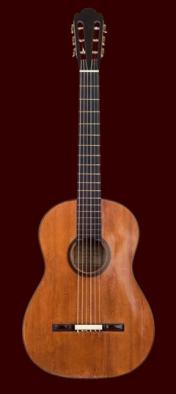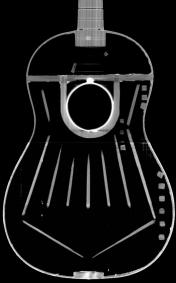Antonio Torres: La Leona
This guitar by Antonio Torres 1856 (or 1845), labelled "La Leona" became an archetype of the modern Spanish guitar. It marks a climax of Spanish guitar production in the 19th century, widened the range of musical expression and still represents a model incentive for modern guitars which vitality is still present.
In our institute this guitar received a preliminary examination by boriscope. The historic value of this instrument deserved a detailed scientific documentation.
One of the special features of this guitar is its so-called"Tornavoz," a rigid metal cylinder from the sound hole to the inside of the instrument, close to the bottom, focussing the sound projection towards the listeners but also barring access for the examinations of the inner structure the inside of the instrument. Therefore new methods had to be developed to reveal the inner structure. The specific challenge was to research the multitude of materials joined in this instrument (different sorts of woods and metals asf.) in appropriate quality by x-ray tomography since this method originally was developed for homogenous materials.


This film was made during x-ray tomography at Fraunhofer Entwicklungszentrum Röntgentechnik Fürth by Dr. Theobald Fuchs. All these details were previously unknown since the metal Tornavoz was blocking the access to the interior.


Note to this project and the technical proceedings:
Theobald Fuchs, Guido Brennhäuser, Helga Haritz:
Perspektiven der Röntgen-Computertomographie zur Untersuchung historischer Musikinstrumente, in: Franz Körndle und Gert-Dieter Ulferts, Konservierung und Restaurierung historischer Tasteninstrumente in den Sammlungen der Klassik-Stiftung Weimar, Augsburg 2011, S. 69-79.




